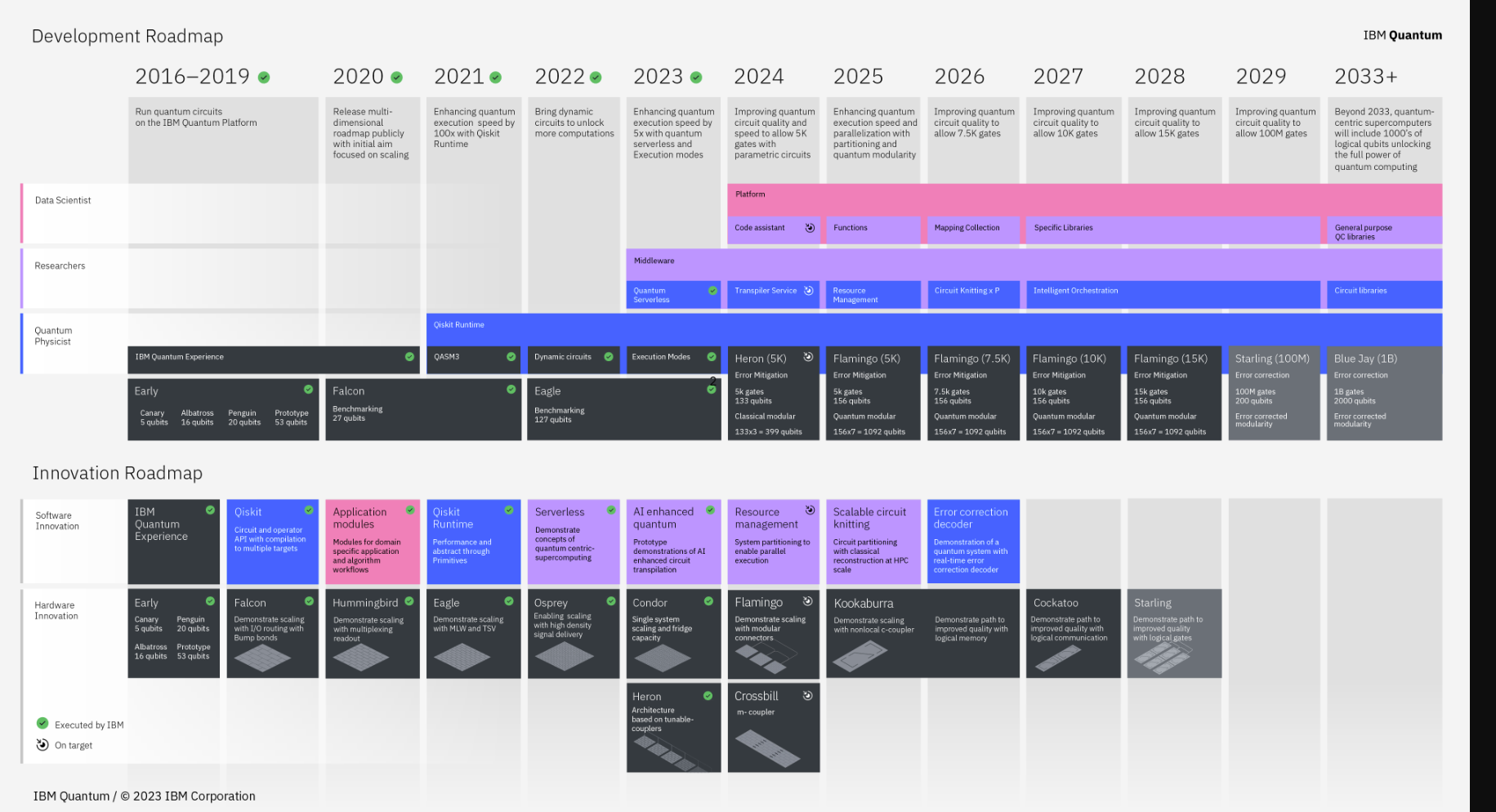IBM launched its IBM Quantum System Two as well as its next-generation quantum processor as the company touts what's possible today with quantum computing.
At the company's IBM Quantum Summit in New York, Big Blue launched IBM Quantum Heron, a 133-qubit processor that's designed to deliver performance and low error rates relative to its predecessor.
Three Heron processors will power the IBM Quantum System Two, which is the company's first modular quantum computer. Modular quantum processors are being pursued by a bevy of industry players as quantum computing is likely to blend with supercomputing at first. Quantum System Two is located in Yorktown Heights, NY.
IBM also outlined its development roadmap to 2033 with a focus on the quality of gate operations, quantum circuits and running at scale.
Constellation Research CEO Ray Wang said:
“Quantum computers need quantum chips and IBM Quantum System Two addresses the need for faster and more precise error mitigation and correction before we achieve mass adoption. The path to the Blue Jay system by 2033 has been one of IBM's most consistent achievements in computing.”
IBM demonstrated how its 127-qubit IBM Quantum Eagle processor can power systems used as scientific tools to solve chemistry, physics and materials problems.
With IBM Quantum Heron, IBM is planning to use a 5x performance boost with improved error rates to build out a fleet of systems. These systems will mostly be available to customers via cloud platforms. In many respects, quantum computing is entering a more accessible era.
- AWS launches Braket Direct with dedicated quantum computing instances, access to experts
- Will IonQ make quantum computing enterprise relevant in 2025?
- Quantum Computing Platforms
- Quantum Computing Software Platforms
- Quantum Full Stack Players
- Why your quantum computing vendors are going to look familiar
Meanwhile, IBM outlined a Quantum Development Roadmap with future processor plans and systems. Here's the roadmap (larger format).

IBM also detailed a software stack that will use generative AI and watsonx to make quantum software programming easier. IBM is taking Qiskit 1.0 and adding Qiskit Patterns, which enables developers to create code more easily. Combined with Qiskit Runtime and Quantum Serverless and IBM is looking to create an entire quantum computing stack for multiple scenarios.


